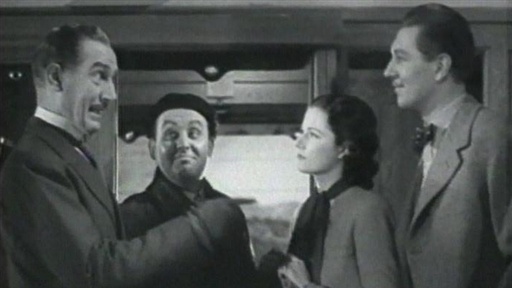
Alfred Hitchcock, master of suspense, presents a beautiful, well edited film in "The Lady Vanishes". The plot is clever, telling the story of a young woman, Iris, who befriends an old British woman named Miss. Froy, who vanishes from the train entirely. Iris is convinced that something is wrong but nobody on the train save herself remembers the old woman. Hitchcock uses masterful cinematic storytelling as the mystery plays out. Screen direction, and montages are two powerful tool Hitchcock employed in this film.
Throughout the movie there are many shots of the train's exterior as it runs across the tracks. To take complete advantage of these shots Hitchcock used screen direction to send a subtle hint to the audience of the trouble to come. The train often moves across the screen on the x-axis(horizontally), this is normal movement for a train, but what makes it clever is that it moves from right to left. In western culture, the eye is accustomed to moving from left to right due to the direction one reads. Therefore, when the eye perceives motion in the opposite direction it causes subconscious discomfort. This direction therefore can be used to increase the tension of a scene, as is done in "The Lady Vanishes".
Montages are often used to represent the passage of time. The montage when Iris was coming to for the second time was particularly brilliant. Not only did it show time passing, but it also presented the chaos that was to come. The fast assembly of cuts gave a sense of panic to the film which raised suspense, and tension. It showed that while the character was out, the scene itself was developing and changing. This warns the viewer of the disorientation the character will experience when she wakes to find the world changed around her.
The film was brilliant. Fresh, and watchable, it keeps the viewer's attention. The characters are likable and understandable, which created a tie with the viewer almost instantly. The tie with Miss Froy was especially important, and it was acquired quite easily in the first scenes of the film. Hats of to Mr. Hitchcock and his masterful direction!
No comments:
Post a Comment